DJI Mavic 3 review: DJI's first compact pro drone is on an entirely different level
The DJI Mavic 3 is a state-of-the-art aerial tripod drone for discerning videographers and photographers – here's our review

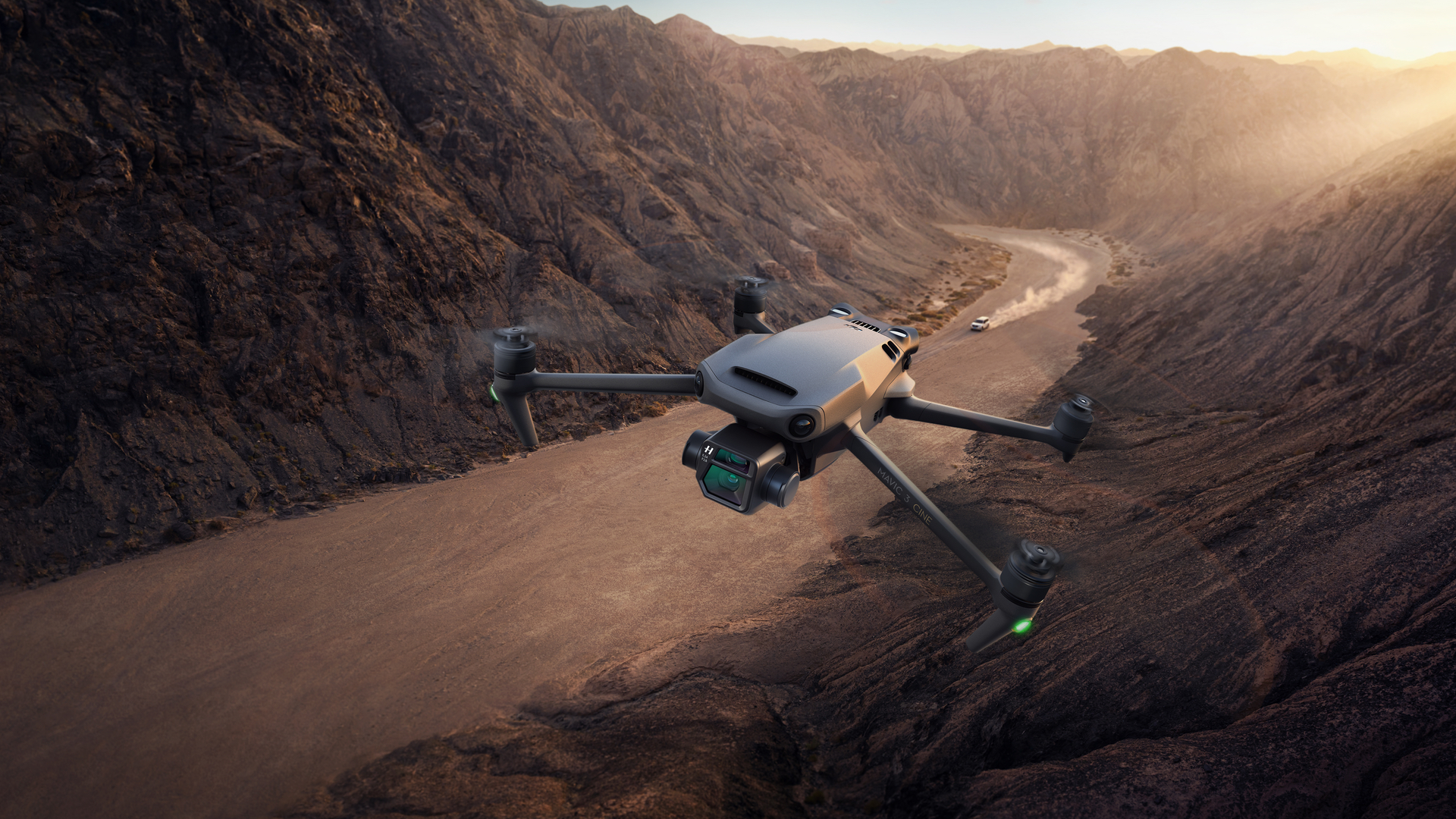
The new DJI Mavic 3 is the first compact, foldable drone designed for professional use. It’s not cheap, mind, but then how could it be when it’s equipped with a four-thirds camera sensor, a separate tele zoom camera for scouting far-away subjects, obstacle avoidance in every direction and a flight time in excess of 40 minutes? Matchless.
-
+
Premium four-thirds Hasselblad camera
-
+
A second zoom camera
-
+
Produces pin-sharp images
-
+
Superb for low-light shooting
-
+
Full obstacle avoidance
-
+
Relatively easy to transport
-
-
Complicated CAA licensing
-
-
Very expensive
Why you can trust T3

Welcome to T3's in-depth DJI Mavic 3 drone review. TL;DR: this is the ultimate compact drone for wealthy amateurs, pro videographers and landscape aerial photographers.
DJI products rarely fail to impress – the brand dominates our best drone ranking – but this model is quite literally on another level when it comes to drone design and performance expertise. The price tag (GBP £1,879 / USD $2,199 / AUD $3,099) also means it punches into a higher price category for prosumer drones, which means it's only really for those with deep pockets (you'll find some more wallet-friendly alternatives in our best cheap drone guide).
The DJI Mavic 3 might look a lot like its predecessor, the Mavic 2 Pro, but under the hood it's a completely different picture. The 3 completely raises the bar when it comes to capturing breathtaking aerial imagery because, for the first time on a drone in this price band, its camera is equipped with a four-thirds sensor as used on many high-end land-based mirrorless cameras. The result is a startling improvement in clarity, depth and sharpness across the entire frame and an insane ability to shoot in really low light with hardly any noticeable noise. But that’s not all because it also features a second camera with telephoto lens which is essentially used for scouting subjects from a distance.
However, you will almost certainly start drooling when I tell you what the standard model is capable of. So let’s get to it. Here's my full DJI Mavic 3 review. And if you're wondering whether to opt for this model or the other 2021 addition to the DJI lineup, head to our DJI Air 2S vs DJI Mavic 3 faceoff.
DJI Mavic 3 drone review: price and release date
The DJI Mavic 3 launched on 5 November 2021. It's available in two variants – the standard model which retails at GBP £1,879 / USD $2,199 / AUD $3,099 and, for the professional industry, the Mavic 3 Cinematic which supports Apple ProRes 422 HQ video recording and comes equipped with a 1TB Solid State Drive. As you might expect, it comes with a serious price hike (GBP £4,279 / USD $4,999 / AUD $7,199) – so you won’t be buying this model unless you’ve either won the lottery or your business depends on it (more info: Should you buy the DJI Mavic 3 standard kit or Fly More Combo?').
- Looking for a toy option? Here are the best kids drones
DJI Mavic 3 drone review: design
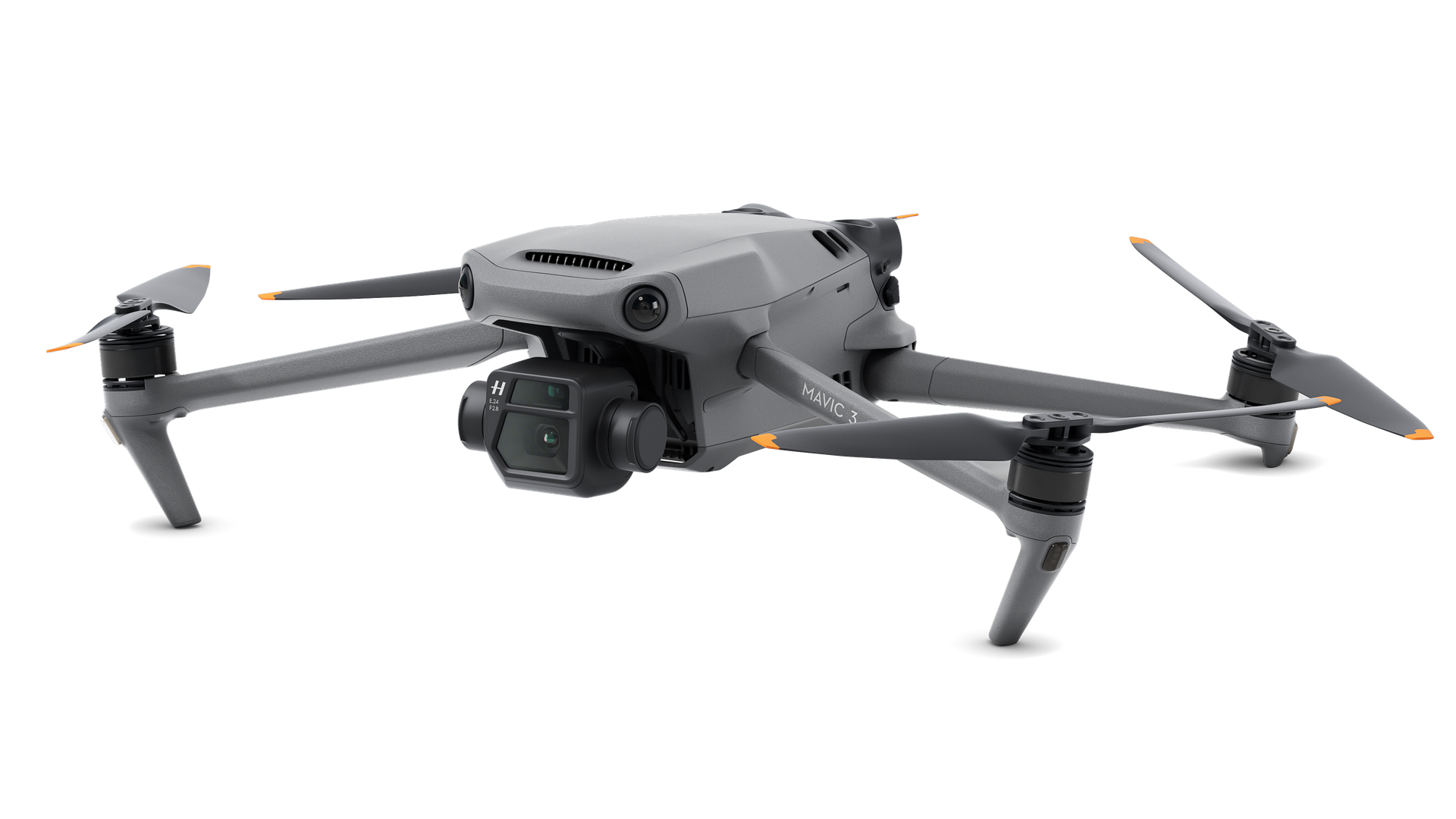
At first glance the Mavic 3 looks the same as its forebear, the Mavic 2 Pro only it’s a bit more rounded, darker in colour and noticeably equipped with more safety cameras and sensors. However, place them side by side and the difference in size becomes apparent. Where the Mavic Pro 2 measures 214×91×84mm when folded, the Mavic 3 is 221×96.3×90.3mm. There’s an even bigger difference when unfolded – at 347.5×283×107.7mm, the Mavic 3 is visibly larger by a several centimetres. And the battery? The battery is a whopper in size and capable of keeping the drone aloft for up to a class-leading 45 minutes. Yet somehow DJI’s white-suited boffins have kept this drone’s weight to a smidge under 900g, or 895g to be precise. Compare that to the Mavic Pro 2’s 907g and you really do wonder how they did it.
Build quality is the best yet from a company that always impresses in this regard. True to form, the Mavic 3 feels solid and rugged white the whole camera housing is clad in some sort of matt-coated metal. Even the new gimbal protector – a slightly kinky jockstrap-type contraption that keeps the props together and the all-important camera out of harm’s way during transport – is a work of Apple-like functionality.
Get all the latest news, reviews, deals and buying guides on gorgeous tech, home and active products from the T3 experts
And speaking of transport, although the drone is a few grams lighter than the Mavic 2 Pro, its overall size when folded combined with the large hand controller makes it quite cumbersome and a bit heavy if trekking a long distance to a specific location.
DJI Mavic 3 review: in-flight features
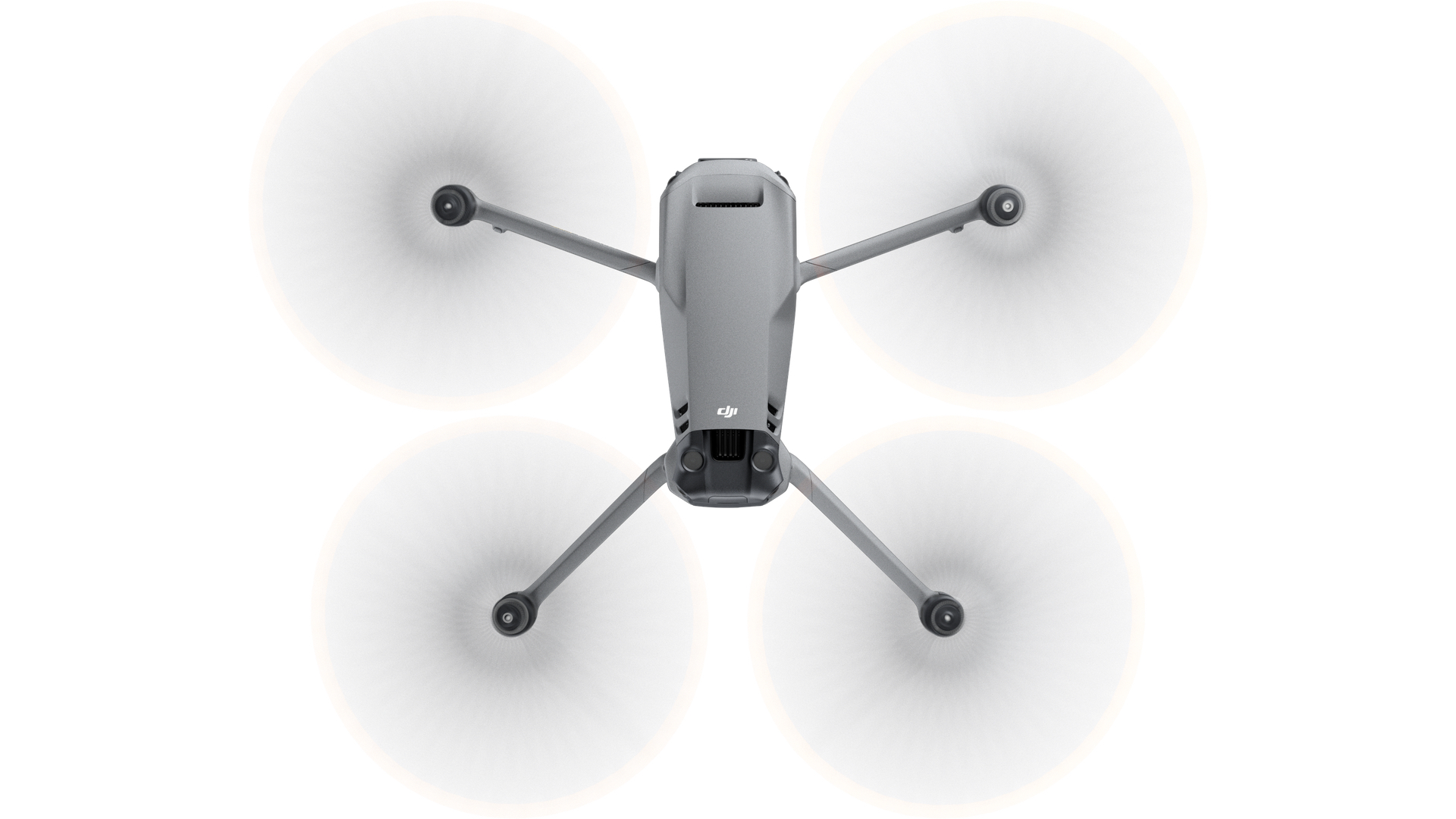
The Mavic 3 comes armed with obstacle sensors above, below and to the sides. Consequently, its ability to avoid crashing into walls, tree foliage and other large obstructions is second to none.
Crucially, the Mavic 3’s flight time extends to an amazing 45 minutes (or around 40 minutes in reality). This means cinematographers have more time to capture those money shots without the panic of a low battery alarm ringing in the ears.
Like the DJI Air 2S, the Mavic 3 also features APAS 5.0 (Advanced Pilot Assistance System). Although I didn’t test this feature, it is said to be DJI’s most advanced autonomous mode yet and capable of guiding the aircraft through dense foliage without crashing.
Sometime in January, DJI will provide a firmware update that will give the Mavic 3 the ability to follow a subject automatically using Active Track 5.0. QuickShots and MasterShots as featured on the Air 2S will also be added. MasterShots is an especially cool feature since it enables the drone to fly around on its own while it takes 10 different video sequences of a subject from a variety of angles. It then stitches the scenes together to produce a complete cinematic video – with zero input from the pilot.
DJI Mavic 3 review: camera performance
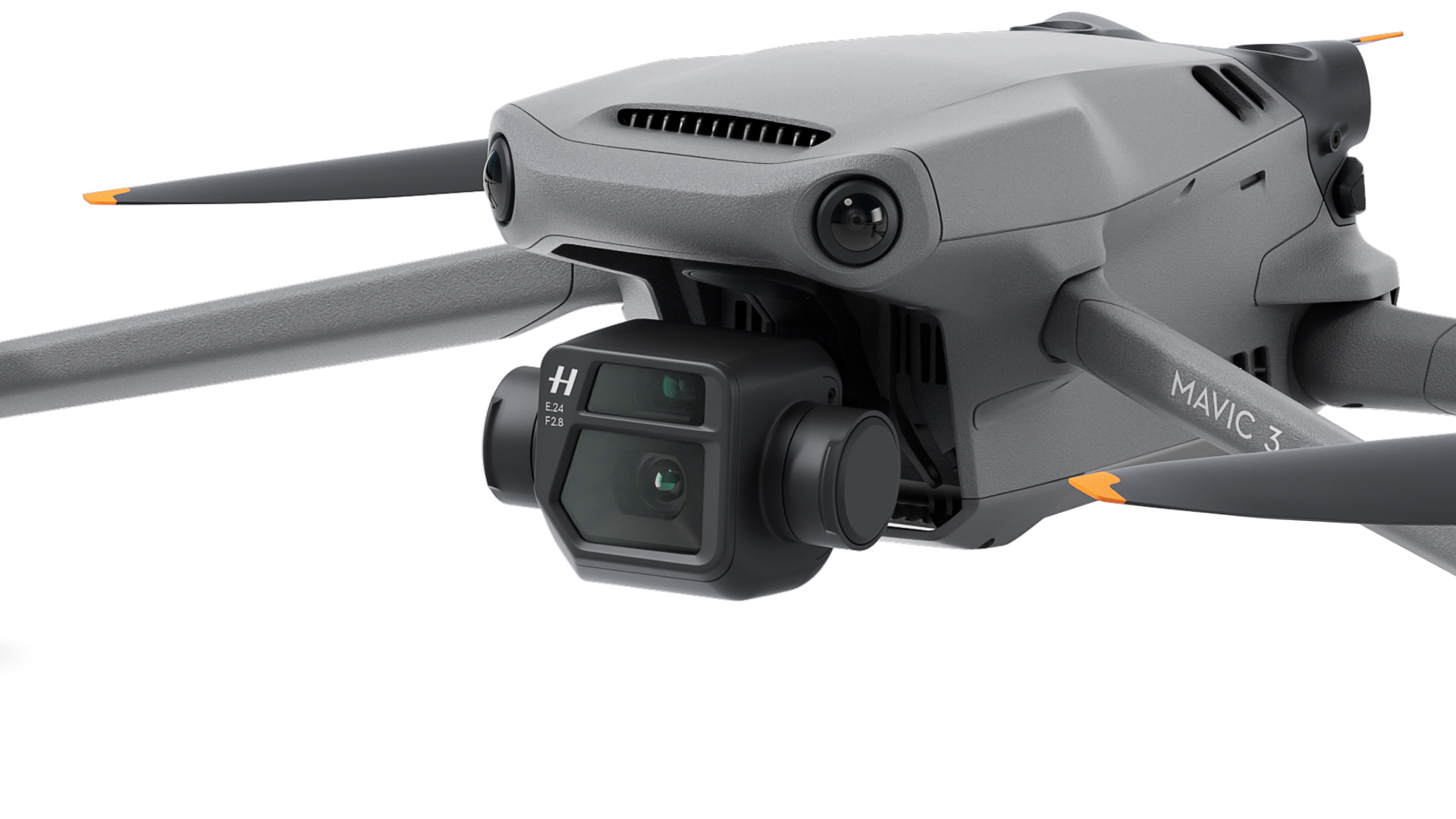
The DJI Mavic 3's new Hasselblad camera is equipped with a four-thirds sensor for crisp, tack-sharp imagery in all conditions
I still remember the DJI Phantom 2 Vision drone with its bulbous white camera and no gimbal. I look at the 1080p footage I originally shot today and I’m aghast that I thought it was even a little bit good. The same thing happened with the Phantom Vision 2+ which was fitted with a gimbal. Wow, we all thought, this footage is way better. It was a bit but, in hindsight, it was still bloody awful. Nevertheless, DJI’s cameras continued to improve, and each time this writer and many others praised the company for pushing the cinematic envelope. Every one was better than the last. By the time DJI’s first aerial 4K camera was released many of us thought it couldn’t get any better. Well we were wrong again because the Hasselblad camera fitted to this beast of a drone is on another level.
Firstly the camera – and the three-axis gimbal it’s attached to – is built like a brick so, lens notwithstanding, it should survive a minor impact. Secondly, it’s equipped with a four-thirds sensor capable of shooting in 5.1K at up to 50 frames per second, 4K at up to 120fps and 1080p at up to 200fps. Its 24mm lens has an aperture range of f/2.8 to f/11 and it shoots 20 megapixel stills in both JPEG and RAW.
Aside from its ability to produce staggeringly sharp visuals in broad daylight, one of the very best things about this new camera is that it can shoot in really low-light conditions with very little image degradation. I tried it out in a number of lighting conditions and I genuinely can’t think of anything negative to say – its ability to reproduce a scene in such rich detail left me speechless.
We are, quite literally, one step closer to an APS-C size sensor and just two steps away from full frame. Heaven alone knows how good that would be but I personally don’t think us mere mortals would be able to tell much difference. For me, this is as good as I want it to be.
Having a drone with a camera of this calibre is one thing, but having two cameras on board is something entirely new. Actually the second camera, which sits directly above the main camera, isn’t really suitable for shooting footage with since it is ostensibly designed for step zooming in on subjects that are too far away to fly to unless necessary. The tele camera and its 28x hybrid zoom serves as a sort of scout so pilots can save valuable battery time by being able to zoom in on a subject that looks interesting from a distance. If the subject turns out to be of no interest at all, the pilot will have saved valuable flight time. It’s a great idea but I’m not sure how many times it will be used in the real world.
DJI Mavic 3 review: flight performance
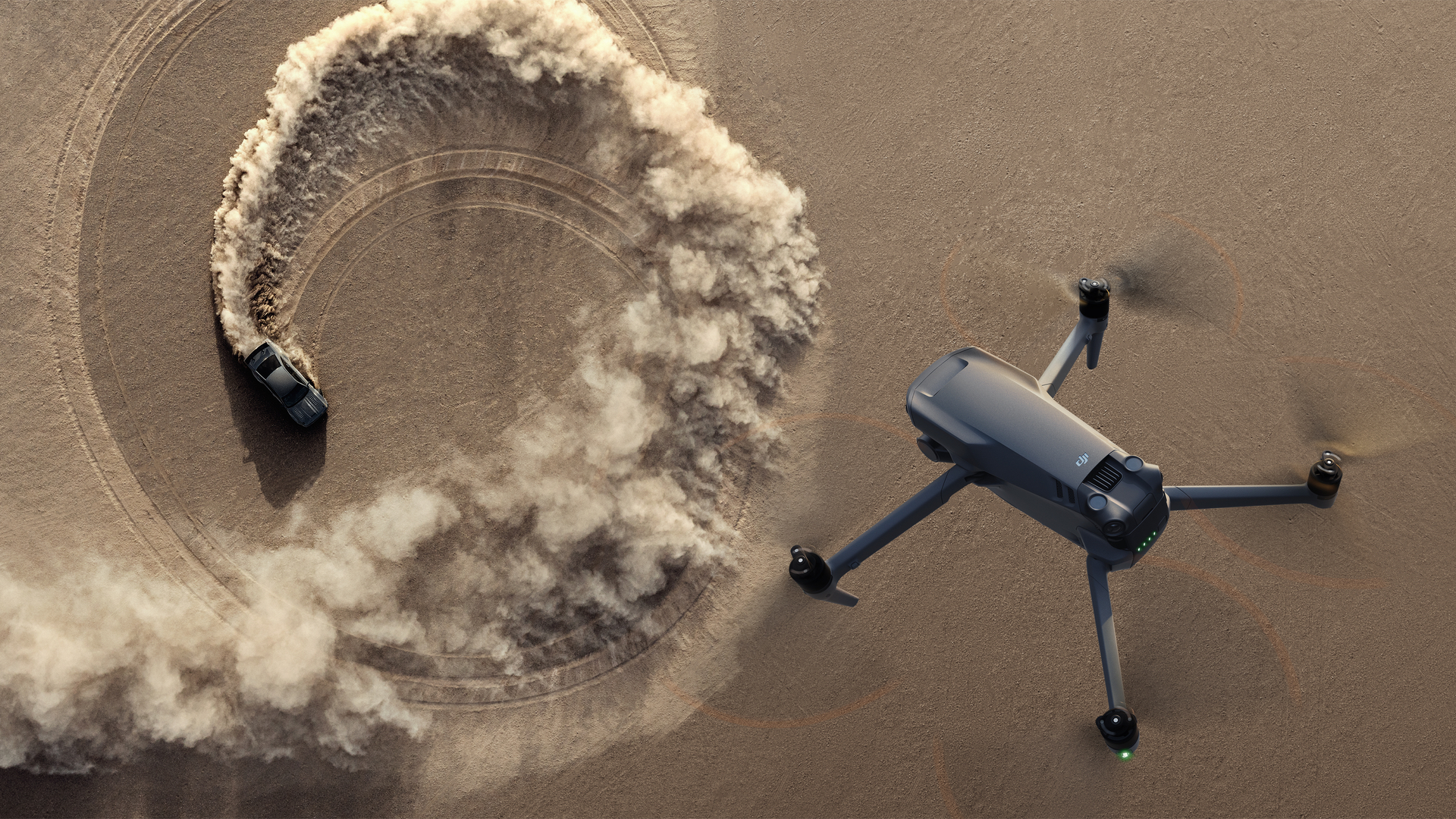
What can you say about any DJI drone’s flight characteristics that we don’t already know? Trust me, this beauty flies with such confidence inspiring steadiness and reliability that all pre-flight nerves simply evaporate as soon as you push up on the perfectly sprung joystick – everything feels so slick and smooth.
The Mavic 3’s 46mph top speed is just two more than the current Mavic 2 Pro which isn’t especially groundbreaking. However, its ascent speed is radically quicker – 18mph which means you can create sensational climbing footage without the need to speed it up in post production. The Mavic 3’s increased 13mph descent speed, too, is handy for getting the drone down in an airborne emergency (rather handily, the excellent DJI Fly app which accompanies the drone lists any local low-flying aircraft in the area so you’re always forewarned of any possible altercations with manned aircraft).
Although you shouldn’t, by law, fly beyond ‘line of sight’, the Mavic 3 has a transmission range of 15km (9.32 miles). This means you could feasibly take off on Hampstead Heath in London and fly the drone to Greenwich while receiving a crisp image from the front camera on your phone. Amazing.
- DJI Mini 2 drone review: our favourite mini camera drone
DJI Mavic 3 review: price and bundle options
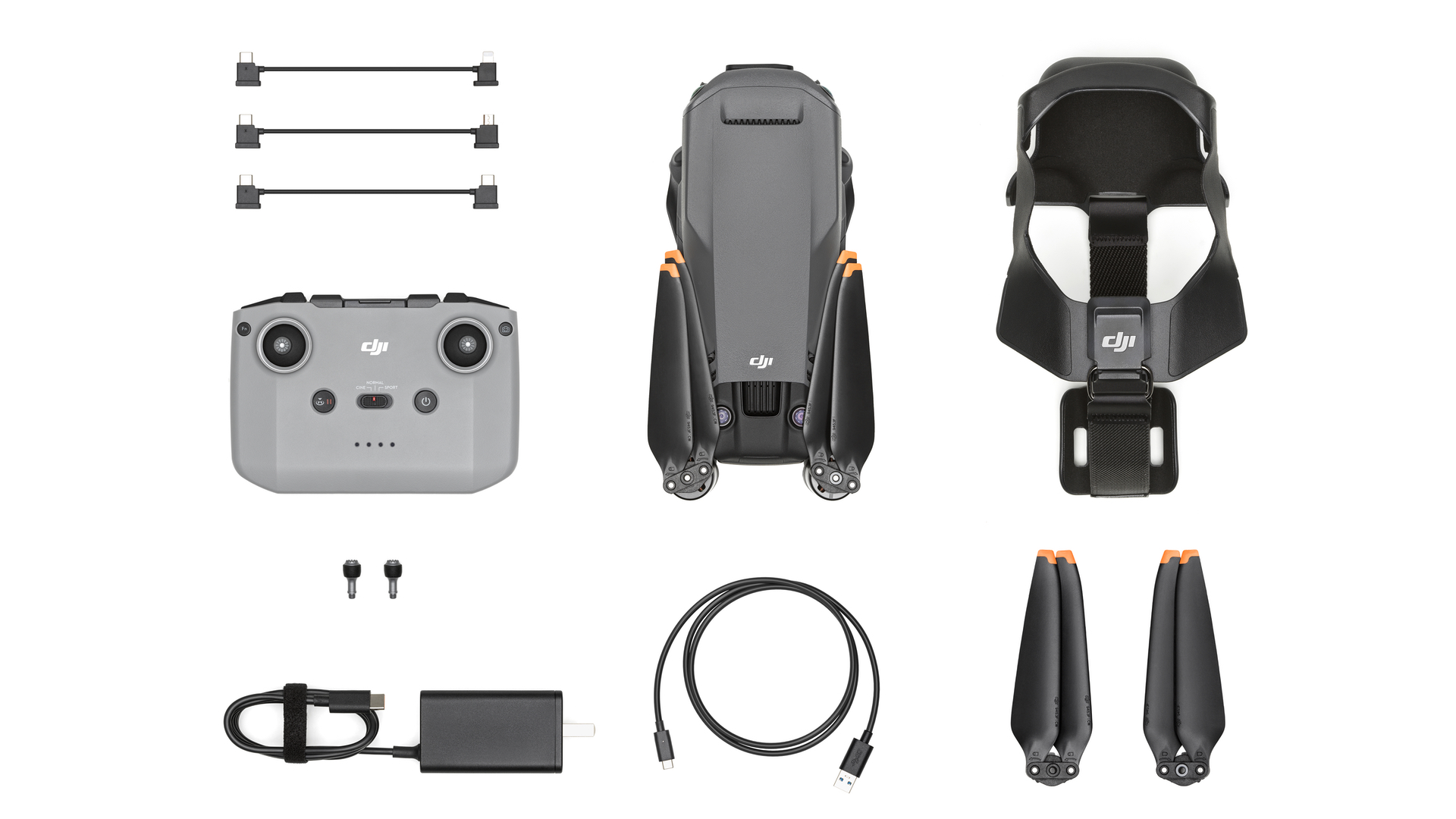
The basic Mavic 3 package retails at GBP £1,879 / USD $2,199 / AUD $3,099 and comprises the drone, hand controller, battery, simple charger, three different connecting cables for your phone and a spare set of props.
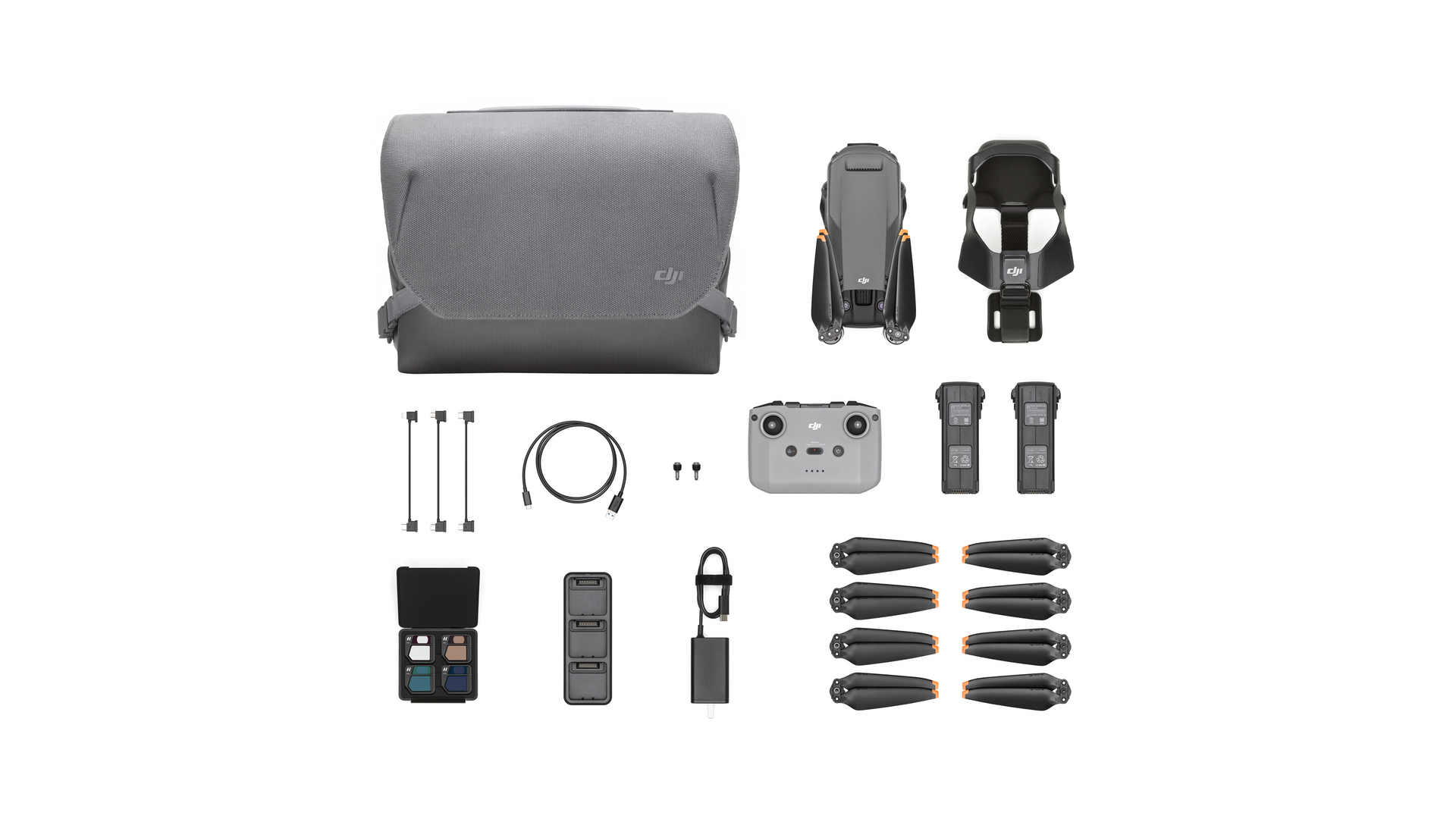
For the ultimate cinematography package, opt for the Fly More Combo
If you’re flush and wish to save on future accessories you will inevitable buy at some point, go for the Mavic 3 Fly More Combo. This full-house package costs GBP £2,549 / USD $2,999 / AUD $4,199 and consists of the the drone, controller, three batteries, a multi charger, a set of four ND filters and two spare sets of props. And it all comes in a superbly made shoulder bag that converts into a rucksack.
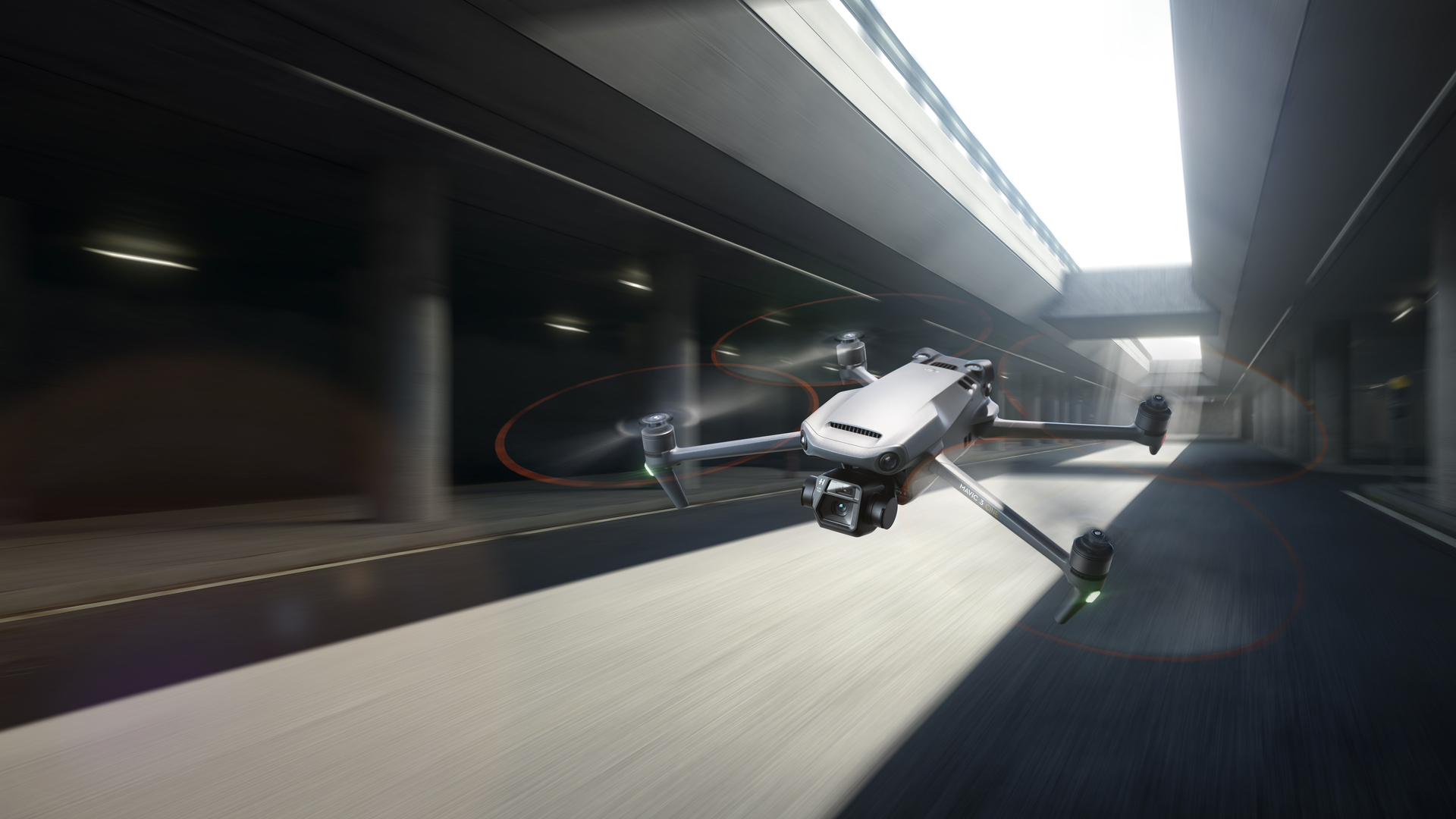
DJI Mavic 3 review: do I need a licence to fly it?
You will definitely require a Flyer ID and Operator ID from the CAA to fly this drone and possibly even an Open A2 Certificate of Competency if you want the freedom to fly in more areas and even use the Air 2S for commercial reasons. You can find out all about the registration process in our handy guide to UK drone regulations.
Find out more about CAA drone regulations.
DJI Mavic 3 review: verdict
If you can afford the higher asking price, this drone is a no brainer. The quality of the video footage and stills the amazing Hasselblad camera produces is about as good as it’ll ever get. This is a drone you will hang on to for years – unless, of course, you crash it. However, if cost is a major obstacle, consider the superb DJI Air 2S instead. It costs significantly less, its internal DNA is very similar and its one-inch camera sensor produces exceptional results for the price.
First reviewed November 2021
Derek (aka Delbert, Delvis, Delphinium, Delboy etc) specialises in home and outdoor wares, from coffee machines, white appliances and vacs to drones, garden gear and BBQs. He has been writing for more years than anyone can remember, starting at the legendary Time Out magazine – the original, London version – on a typewriter! He now writes for T3 between playing drums with his bandmates in Red Box (redboxmusic).
